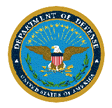
of Problem
Review
Results
 |
|
of Problem Review Results |
Department of Defense public affairs officials are responsible for conveying information to a target audience during crisis communication campaigns. A factor determining the success of such a campaign is the ability to effectively communicate strategic messages that describe the specific elements a command wants its public to remember. Frequently representatives simply provide information without evaluating how to best reach a commandís audience. Applying a strategic message to three commonly used media channels, radio, television, and newspaper, affects an audience differently. Collectively applying the principles of social presence, media richness, and uses and gratifications theory helps explain how a message reaches an audience via these mediums. A summative evaluation of this process reveals what channels convey more elements of strategic messages and how much of a strategic message an audience recalls. These findings can assist public affairs officials to redirect the efforts of a current campaign or how to direct the efforts of a developing scenario. |